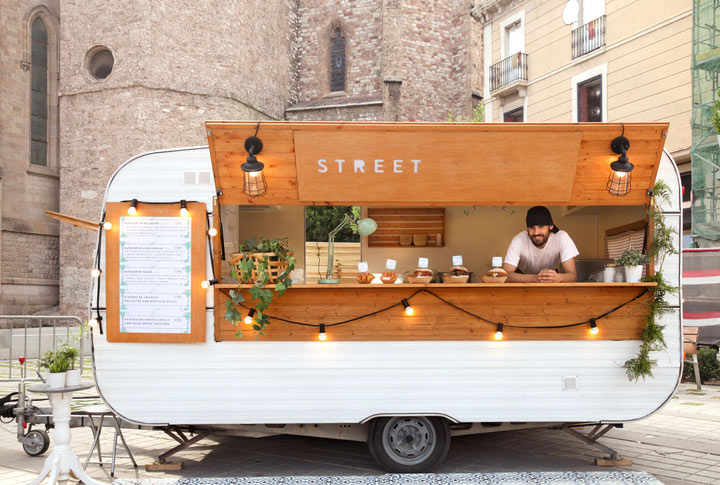Contributors
My main focus is managing the blog and product content for the Protectivity website ensuring everything aligns wi...
Starting a painter and decorator business can be a rewarding venture if you have the skills and passion. It requires time and effort, but there are plenty of opportunities out there to bring in work if you remain committed. You can enjoy the freedom and flexibility of being your own boss and get to flex your creative skills, while meeting a wide range of people.
If you love the idea of running your own company, setting your own schedule and the variety of constantly changing working environments, the profession certainly gives you all of this. You’ll need to take a sustained approach to building a client base and reputation, as patience and consistency are key. Of course, it all starts with offering a high-quality service. However, there’s so much more to building a successful business that will give you an attractive income.
In this guide, we’ll talk you through how to become a painter and decorator, with advice on the kind of money you could earn and ways to eventually grow your business.

Do painters and decorators make good money?
Painters and decorators can earn a good living from their trade. You can work on ways to increase your earnings over time. For example, you could research the most profitable areas to specialise in, charge higher rates with experience, and focus only on your local area to keep travel costs down.
It’s well worth knowing what kind of income you could make from your profession before you decide how to market your business and how you’ll source customers. If you’re wondering how much self-employed painters and decorators earn, you can consult government resources and trade websites for a good indication.
However, as a rough guide, sole traders can earn around £37 an hour, £296 a day, or £54,576 a year, on average. This increases if you set up a limited company, to an average of around £48 an hour, £384 a day, or £70,802 a year; factor in the additional costs from this figure, such as corporation tax. If you employ staff, your outgoings will also include their wages.
Read more on how much painters and decorators earn.
Build your business with a methodical approach
Here is a step-by-step guide to how to start painting and decorating for a living. If you already work in this profession for an existing company, you can follow these tips to find out how to set up on your own.
Review your current skills and qualifications
You don’t need to be qualified to be a painter and decorator, but you will need to demonstrate your experience. The first thing you’ll want to do is make sure you have the necessary skills and knowledge in painting and decorating.
If you don’t have any past work under your belt yet, consider taking courses or gaining experience through apprenticeships. Maybe you could take on work for an established painter and decorator before you become self-employed, to give you some stability of income and learn from someone else as you hone your talents.
Decide what kind of services you will offer
Knowing your strengths is key. You can either choose to do more of the type of jobs you love, find out what is likely to be most profitable for you, or understand what type of jobs are most likely to be available in your area.
Here are some examples of painting and decorating services you can specialise in:
- Basic painting
- Painting with effects (e.g. marbling)
- Traditional finishes
- Wallpapering (including other materials such as vinyl)
- Minor repairs
- Carpentry
- Tiling
- Flooring
Decide who your ideal customer will be
There are a range of ways you can approach this, so you don’t have to rely on guesswork to find out the best way to secure a steady stream of work. Once you know what you’ll offer, you can research your ideal customer base and assess your competition.
Will you offer your services to commercial or residential clients? What type of buildings have the most potential to bring you business and a healthy fee? Find out how many other people are offering those services, and look at what kind of buildings are in your area. If you focus on working in your own region, you can develop a strong local reputation.
Create a solid business plan
A well-thought-out business plan is essential. It will give you a clearer understanding of how you will approach building a company and securing work, while helping you secure financing if needed. At the very minimum, it should outline the following:
- Your short-term and long-term business goals
- Associated costs, e.g. any requirement investment, training, vehicle, materials and tools
- Your specific services
- Your target market
- Your pricing strategy
- A marketing plan outline
- Financial projections

Register your business correctly
When establishing what you need to be a self-employed painter and decorator, registering your business is one of the most important first steps. Ascertain the appropriate legal structure for your business (either a sole trader or limited company) and register it with the government. Obtain any required permits or licenses for your area. There are advantages and disadvantages to both, but when starting out it may be more likely that you’ll meet the requirements of a sole trading company.
As a sole trader, you’ll be able to keep everything you earn after tax. You can register as a limited company when your income is over a certain threshold, which could give you more credibility. Some bigger clients may only do business with limited companies.
Invest in the right equipment and supplies
Purchase the necessary painting and decorating equipment and supplies. This includes brushes, rollers, ladders, drop cloths, paint, and wallpaper. Aim to invest more in items where the materials need to be high-quality, which will help you deliver a professional service. For anything that can be bought at a lower price without compromising the results, make sure you shop around for the best value.
Determine your pricing and how you want to be paid
Be intentional with how you will price your services. You can do your research to find out how much others charge, but also consider factors such as the cost of materials, labour, overheads, and your desired profit margin. Use your business plan projection as a guide, looking at how much you’ll need to earn each month in order to meet your desired annual income. Decide on payment terms and methods, including whether you will require upfront deposits.
Start marketing your business online and offline
Develop a detailed marketing strategy that will help you to attract clients through various channels. At the very least, you should create a professional website, set up social media profiles, create business cards and flyers, and network with local real estate agents, builders, and interior designers. Find out what networking events are in your area, and join local and national business federations which encourage referrals between members.
Continously add to your portfolio
Showcase your work through a portfolio of completed projects, which can sit on a dedicated page within your website. You could also post regular updates on sites such as LinkedIn and Facebook to keep people informed on your latest work, encourage conversation about your services and generate enquiries.
Include before-and-after photos to demonstrate your skills and the quality of your work. This portfolio will be a valuable tool when meeting potential clients, as they can easily see what you do rather than taking your word for it.
Familiarise yourself with estimating and bidding
Learn how to provide estimates for projects. This is a useful alternative to giving quotes, as they can’t be changed if the work ends up taking longer or incurring unexpected costs. This can leave you out of pocket and doesn’t establish you as a professional who’s being paid what they deserve, which can diminish the respect people have for your business.
Be transparent with clients about the scope of work, costs, and timelines. Providing detailed and competitive bids can help you win contracts.
Create a reliable template for client contracts
Always have a written contract in place before starting any project. The contract should outline the scope of work, timelines, payment terms, and any other relevant details. This helps protect both you and your clients, giving you both a clear vision of what to expect and what the finished outcome will look like.
Contracts serve the purpose of letting clients know exactly what they’re getting in return for their investment and minimising the chance of any disputes around payments or delivery dates further down the line.

Create a thorough accounting system
Set up a system to manage your finances, including tracking income and expenses, invoicing clients, and paying taxes. Consider hiring an accountant if you need support in this area. If you have the know-how and confidence to take care of your own finances, you can use accounting software to help you stay organised. Read our blog on Accounting tips for small businesses.
Develop your knowledge of safety and regulations
Make sure you are highly knowledgeable about safety regulations and best practices in your industry. Anyone you hire will also need to know these inside out, in order to follow guidelines and prevent accidents. You’ll need to comply with workplace health and safety regulations, as well as exercising fire safety. Pay attention to areas such as the use of equipment, protective clothing, and processes for reporting accidents.
Always provide high-quality customer service
Never underestimate the importance of excellent customer service for your reputation. Satisfied customers are more likely to give you good reviews, which you should always ask for as standard practice. Ask on completion of the work whether they’d be willing to give you a positive review, and include it in your follow-up emails. You could even offer future discounts in exchange for reviews.
People like to get recommendations for painters and decorators, so if you’ve built trust with customers and impressed them with your quality of work, they’ll talk about you and refer you to anyone and everyone, from friends to family and colleagues. Securing repeat customers should also be a priority when it comes to your business strategy, so the happier clients are, the more likely they’ll return to you for future projects.
Grow your business when the time is right
Your marketing plan should incorporate ways to keep scaling your business, so that you can increase your earnings year on year and become an established name in your sector. Once you’re bringing in a steady stream of work and developing a good reputation, you may get more word-of-mouth referrals, but it pays to avoid complacency. As you experiment with new ways to bring in work, you’ll increase the likelihood of scalability, rather than simply aiming for consistent work.
As you start to increase the scale of your work, you can take on additional painters or decorators. Expanding your team means you’re well-resourced to take on bigger projects, which you could charge higher fees for, and reach out to a greater number of potential customers.
Get Painter and Decorator Insurance with Protectivity
Running a professional painting and decorating company needn’t be made more difficult by worrying about claims against your business. While you focus on doing great work that keeps clients happy, liability insurance gives you reassuring financial support in the event that third parties take you to court, employees become poorly or have an accident while working.
Whether someone suffers an injury, illness or damage to property, Protectivity’s Painter and Decorator Insurance gives you a range of options for protecting your reputation and finances, with your chosen limit. Our Public Liability option protects you in the event you are sued by clients or members of the public, while Employers’ Liability includes claims from staff and subcontractors. You can also protect your tools and equipment with our new tools insurance offering.
Our insurance for tradesman is trusted by thousands. Our helpful team are on hand to support you with any queries.
Get Painters and Decorators Insurance from Protectivity
*Disclaimer – This blog has been created as general information and should not be taken as advice. Make sure you have the correct level of insurance for your requirements and always review policy documentation. Information is factually accurate at the time of publishing but may have become out of date.
Last updated by





























